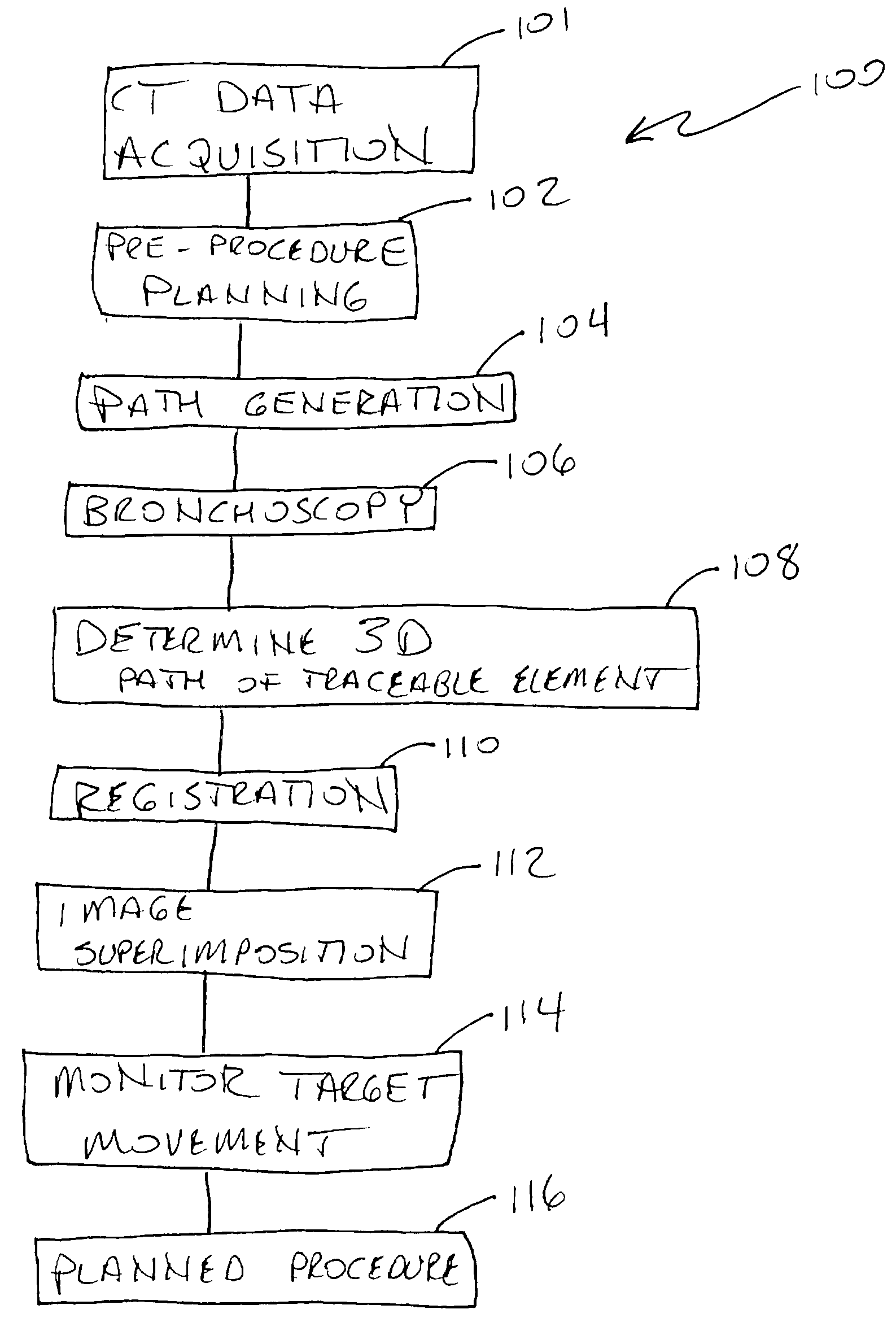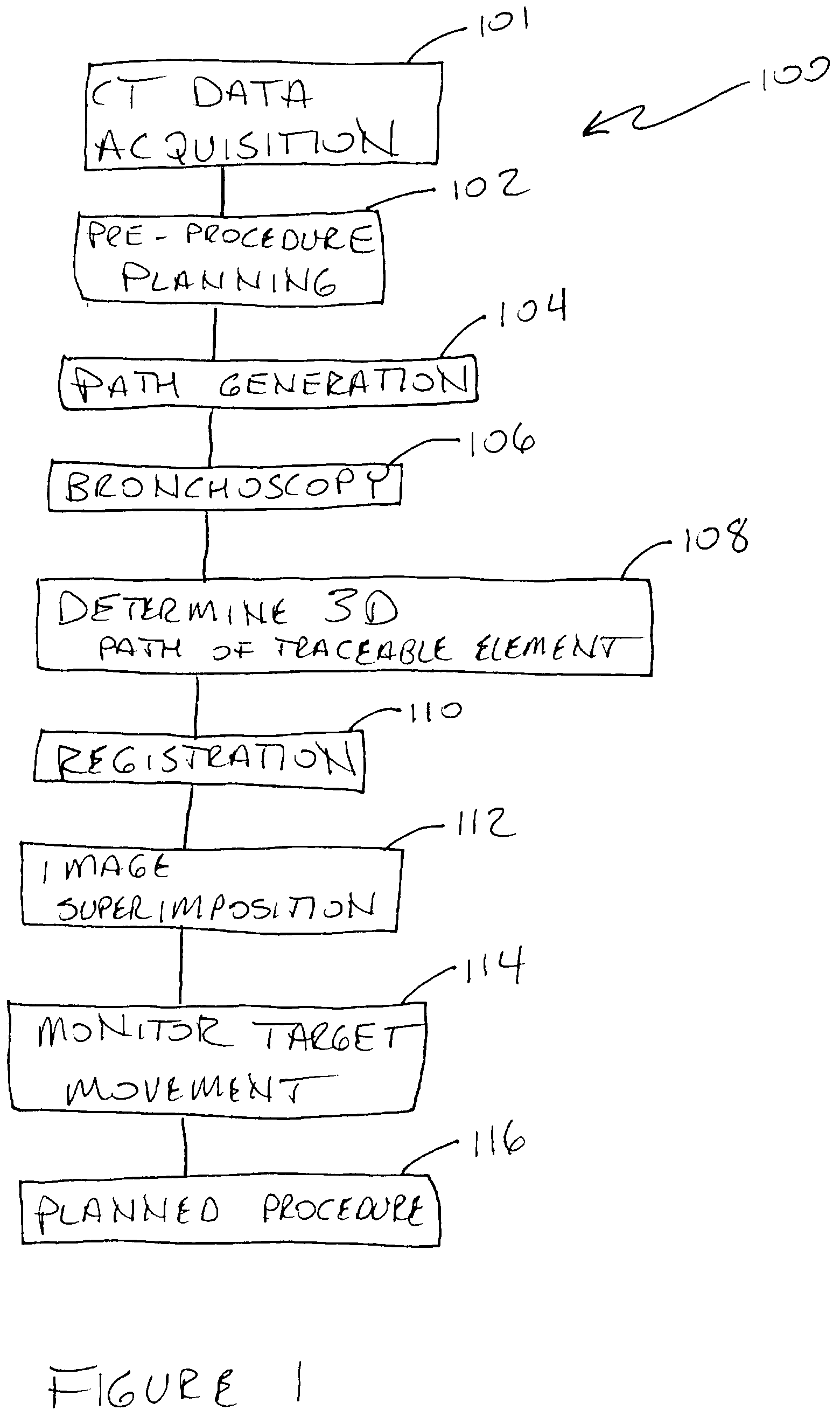CT-Enhanced Fluoroscopy
a fluoroscopy and fluoroscopy technology, applied in the field of ct-enhanced fluoroscopy, can solve the problems of increasing the procedure time and radiation exposure time, increasing the risk to the patient and the attending personal of potential x-ray exposure, and being quite transparent and difficult to identify with conventional fluoroscopy
- Summary
- Abstract
- Description
- Claims
- Application Information
AI Technical Summary
Benefits of technology
Problems solved by technology
Method used
Image
Examples
Embodiment Construction
[0038]Referring now to FIG. 1, there is shown a flowchart that illustrates a method 100 of the present invention.
[0039]At 101 of the method 100, CT data is acquired and transformed into a 3D CT volume, which will be used during the procedure in combination with the real-time X-ray (e.g., fluoroscopic) data. This CT data may even be low-dose CT that is later enhanced with fluoroscopic data, if necessary. Enhancement with fluoroscopic data will be explained in more detail below.
[0040]At 102 of the method 100, the practitioner, such as a physiologist for example, performs pre-procedure planning on the CT data acquired at 101, during which he or she marks each point of interest (e.g., a suspicious lesion) and its dimensions. This procedure may be performed manually or semi-automatically, such as when the points of interest are automatically identified by computer software.
[0041]Once the point of interest is marked, at 104 the recommended path to the point of interest area inside the lun...
PUM
| Property | Measurement | Unit |
|---|---|---|
| area | aaaaa | aaaaa |
| CT | aaaaa | aaaaa |
| radiopaque | aaaaa | aaaaa |
Abstract
Description
Claims
Application Information
 Login to View More
Login to View More - R&D
- Intellectual Property
- Life Sciences
- Materials
- Tech Scout
- Unparalleled Data Quality
- Higher Quality Content
- 60% Fewer Hallucinations
Browse by: Latest US Patents, China's latest patents, Technical Efficacy Thesaurus, Application Domain, Technology Topic, Popular Technical Reports.
© 2025 PatSnap. All rights reserved.Legal|Privacy policy|Modern Slavery Act Transparency Statement|Sitemap|About US| Contact US: help@patsnap.com



